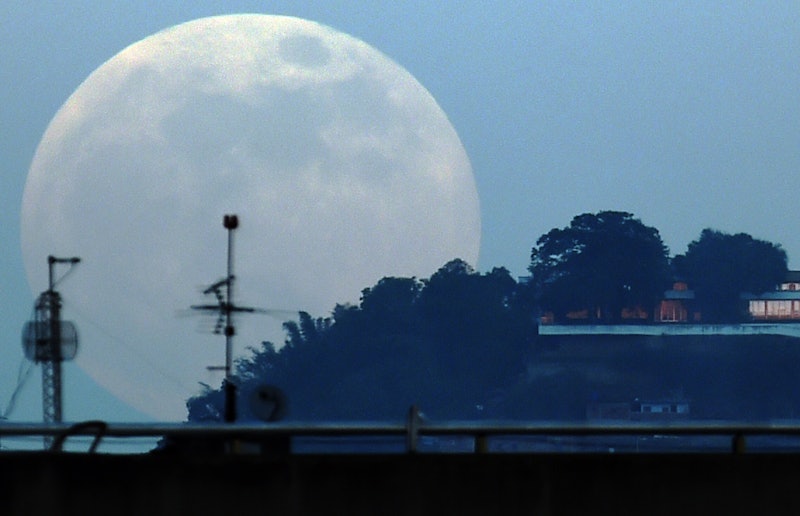Life
Mark Your Calendars For The November Supermoon
Most people don't spend enough time with their head in the clouds, but the wonders of the night sky could entertain us for hours, should we give them the chance. If you're unsure of what to look for, start now with this month's supermoon. And when is the November supermoon in 2016, you ask? Well, it's going to unfold across our skies on Nov. 14. Clear your calendar and brush off your binoculars, because you don't miss one of the most breathtaking shows the atmosphere has to offer.
You may also be wondering how and why some moons come to be known as "super," and why everyone's excited to see this one right now. What are colloquially known as supermoons occur when the moon is incredibly close to the Earth (at "perigee"), making it appear bigger due to the short distance between it and ourselves. As Science Alert reports, the excitement this time around is because it'll be the biggest, closest supermoon we've seen since January of 1948.
Generally Supermoons aren't all that uncommon; in fact, we just had one in October, and after this one, we've got another on Dec. 14 as well. But what's special about this one is that the moon won't be this close to Earth again for a very long time, according to NASA. "The full moon of Nov. 14 is not only the closest full moon of 2016, but also the closest full moon to date in the 21st century," they state. "The full moon won’t come this close to Earth again until Nov. 25, 2034."
However, not all supermoons are made equal, and depending on where you are, the difference between a supermoon and a regular ol' full moon can be either spectacular or almost unnoticeable. As Science Alert reports, "If the Moon is hanging high overhead, and you have no buildings or landmarks to compare it to, it can be tricky to tell that it's larger than usual.
But if you're viewing from a spot where the Moon is sitting closer to the horizon, it can create what's known as "moon illusion." This is where the moon can appear unnaturally large when viewed through foregrounded objects. NASA compares this breathtaking view to an "optical illusion," but notes that it "doesn’t take away from the experience."
If you want to catch the exact time the supermoon will be closest to Earth (and therefore the most dramatic-looking), Space.com notes that you should set your alarms for these times, depending on your time zone: 8:52 a.m. EST, 7:52 a.m. CST, 6:52 a.m. MST, or 5:52 a.m. PST.
If you miss these times however, EarthSky also reports that moon will appear big and bright all night on Nov. 13 and 14 as it rises in the east around sunset, peaks to its highest point at midnight and before setting in the west around sunrise, so there's really no excuse not to take a minute, to look up and catch this phenomena at some point.
Happy moon hunting!
Images: Getty Images; Giphy (2)
